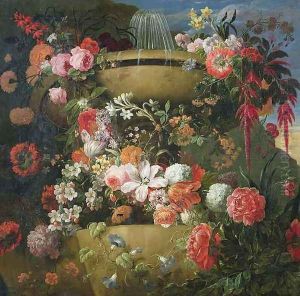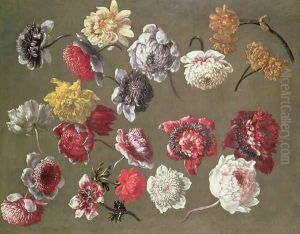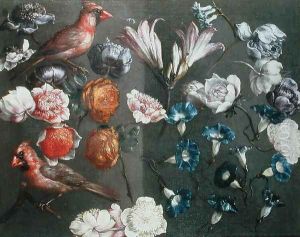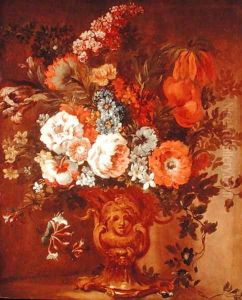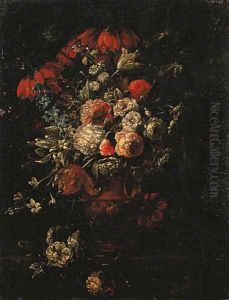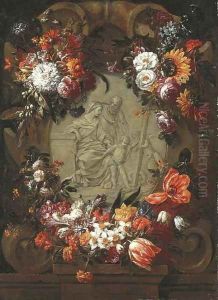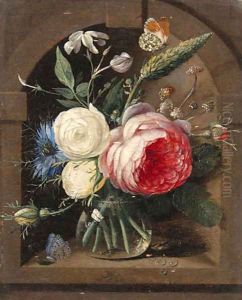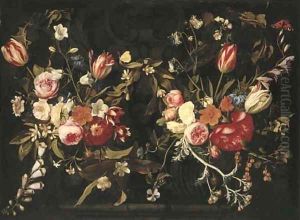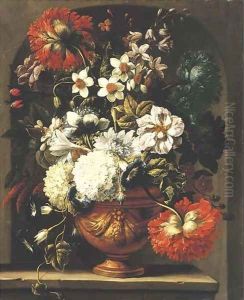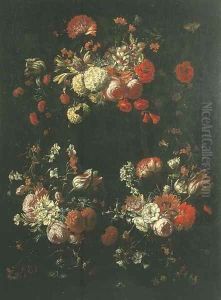Gaspar Peeter The Elder Verbruggen Paintings
Gaspar Peeter Verbruggen the Elder was a distinguished Flemish Baroque painter, renowned for his vibrant still lifes and elaborate altar pieces. Born in Antwerp in 1635, Verbruggen hailed from a city that was a major center for the arts in the 17th century. His work is characterized by a dynamic use of color and meticulous attention to detail, qualities that made him a prominent figure in the Flemish art scene of his time.
Verbruggen's artistic journey began under the tutelage of his father, who was also an artist. This early exposure to art within his family environment laid the foundation for his future career. Verbruggen's talent quickly became evident, and he was admitted to the Guild of St. Luke in Antwerp, an important milestone for artists of the period. Membership in the guild opened up numerous opportunities, allowing him to establish himself as a master artist.
Throughout his career, Verbruggen specialized in floral still lifes, a genre that was highly popular in the 17th century. His compositions are notable for their exuberance and the sense of movement he was able to impart to static scenes. Verbruggen's flowers are depicted with a lifelike quality that seems almost tangible, a testament to his skillful brushwork and keen observation.
In addition to still lifes, Verbruggen also made significant contributions to religious art. He was commissioned to create altar pieces for various churches, showcasing his versatility as an artist. These works often featured elaborate scenes from the Bible, executed with the same attention to detail and vibrant color palette that characterized his still lifes.
Gaspar Peeter Verbruggen the Elder's influence extended beyond his own lifetime. His work was highly sought after, not only in Flanders but also abroad, and his style influenced subsequent generations of artists. Despite his death in 1681, his legacy lived on through his son, Gaspar Peeter Verbruggen the Younger, who followed in his father's footsteps and became a respected painter in his own right.
Verbruggen's contributions to the Flemish Baroque movement cannot be overstated. His mastery of color and composition, along with his ability to imbue inanimate objects with a sense of life, have secured his place in art history. Today, his works are preserved in museums and private collections around the world, continuing to fascinate and inspire art lovers and scholars alike.
